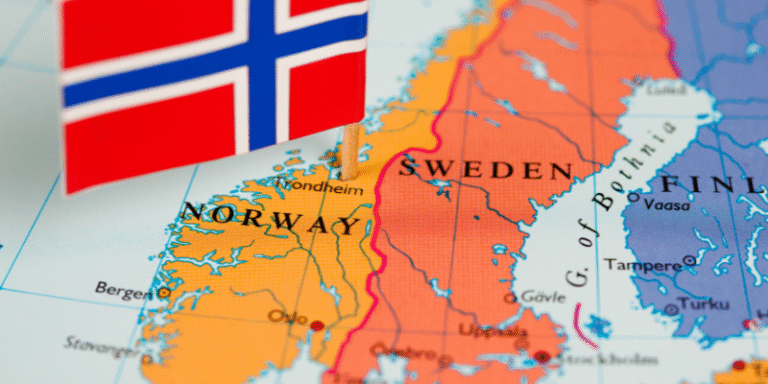Nerway, often called the Land of the Midnight Sun, is a country of breathtaking natural beauty, rich cultural heritage, and unparalleled living standards. From majestic fjords to snow-capped mountains, from cutting-edge urban design to centuries-old traditions, Norway offers a unique blend of history, innovation, and natural wonders that captivate travelers and locals alike.
In this comprehensive guide, we explore everything you need to know about Norway its geography, culture, economy, tourism, and what makes it one of the most desirable places to live and visit.
Geographical Overview of Norway
Norway is located in Northern Europe, occupying the western portion of the Scandinavian Peninsula. It shares borders with Sweden, Finland, and Russia, and boasts an extensive coastline along the North Atlantic Ocean and the Barents Sea.
-
Capital: Oslo
-
Official Language: Norwegian (Bokmål and Nynorsk)
-
Currency: Norwegian Krone (NOK)
-
Population: Approximately 5.5 million
The country’s geography is defined by deep fjords, rugged mountains, glacial valleys, and thousands of islands. These landscapes make Norway a paradise for hikers, skiers, and nature lovers.
Climate and Best Time to Visit
Norway’s climate varies significantly depending on location. The coastal regions experience a milder oceanic climate due to the Gulf Stream, while inland and northern regions have colder, more continental conditions.
-
Summer (June–August): Long days, warm weather, and the famous Midnight Sun in the north.
-
Winter (December–February): Perfect for skiing, snowboarding, and Northern Lights viewing.
-
Best Travel Tip: For the Aurora Borealis, visit between September and March in northern regions like Tromsø.
Cultural Heritage and Traditions
Norwegian culture is deeply rooted in its Viking history and shaped by its close connection to nature. The Norse mythology, sagas, and ancient folklore still influence modern-day traditions and festivals.
-
Bunad: Traditional Norwegian costume worn during national celebrations like Constitution Day (May 17th).
-
Viking Heritage: Norway was home to legendary Viking explorers and warriors.
-
Sami Culture: Indigenous Sami people in the north preserve a distinct language, clothing style, and traditions.
Tourist Attractions in Norway
1. The Norwegian Fjords
Norway’s fjords, including Geirangerfjord and Nærøyfjord (UNESCO World Heritage Sites), are among the most spectacular natural wonders in the world. Towering cliffs, cascading waterfalls, and crystal-clear waters make them a must-see.
2. Oslo
The capital city offers a perfect blend of modern architecture, museums, and green spaces:
-
Vigeland Sculpture Park
-
Oslo Opera House
-
Viking Ship Museum
3. Tromsø
Known as the Gateway to the Arctic, Tromsø is ideal for Northern Lights viewing, polar expeditions, and midnight sun experiences.
4. Lofoten Islands
A dreamy destination with dramatic peaks, fishing villages, and white sandy beaches—perfect for photographers and nature lovers.
5. Bergen
The colorful Bryggen Wharf and surrounding mountains make Bergen a charming, history-rich city.
Outdoor Adventures in Norway
Norway is an outdoor enthusiast’s dream. Popular activities include:
-
Hiking: Preikestolen (Pulpit Rock) and Trolltunga offer some of the most breathtaking views.
-
Skiing: Trysil and Hemsedal are world-class ski resorts.
-
Kayaking: Paddle through serene fjords or along the rugged coastline.
-
Wildlife Watching: Spot reindeer, moose, puffins, and whales.
Economy and Standard of Living
Norway is one of the wealthiest countries in the world, with a high standard of living and a robust welfare system. The economy is fueled by:
-
Oil and Gas Industry
-
Fisheries
-
Tourism
-
Renewable Energy
The country consistently ranks high in human development indexes, thanks to universal healthcare, free education, and a strong emphasis on work-life balance.
Cuisine and Local Delicacies
Norwegian food reflects its maritime heritage and northern climate:
-
Gravlaks: Salmon cured with salt, sugar, and dill.
-
Rakfisk: Fermented fish delicacy.
-
Lefse: Traditional soft flatbread.
-
Kjøttkaker: Norwegian meatballs.
Seafood lovers will find Norway a paradise, with freshly caught cod, mackerel, and king crab on many menus.
Transportation and Getting Around
Norway boasts a highly efficient transport system:
-
Rail: Scenic train journeys like the Flåm Railway.
-
Ferries: Connecting islands and coastal towns.
-
Road Trips: The Atlantic Road and National Tourist Routes offer unparalleled driving experiences.
-
Air Travel: Domestic flights connect major cities and remote northern areas.
Sustainable Tourism in Norway
Norway is a leader in eco-friendly travel initiatives:
-
Promotion of electric ferries and EV car rentals.
-
Strict environmental regulations for tour operators.
-
Encouragement of Leave No Trace principles among hikers and campers.
Essential Travel Tips
-
Currency: Always carry some Norwegian Krone; credit cards are widely accepted.
-
Language: English is widely spoken, but learning basic Norwegian phrases is appreciated.
-
Weather Preparedness: Dress in layers and be ready for sudden changes in weather.
-
Public Etiquette: Norwegians value personal space and quiet environments.
Conclusion
Norway is a land where nature and modernity coexist in harmony. From its dramatic landscapes to its vibrant cities, from its deep-rooted traditions to its forward-thinking innovations, Norway offers an experience unlike any other. Whether you’re seeking adventure, cultural enrichment, or a peaceful escape, Norway has it all.


